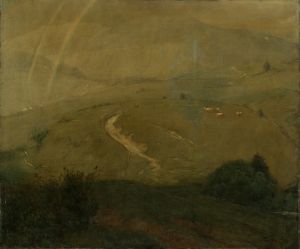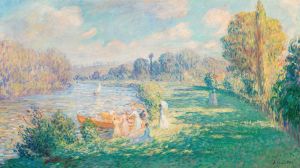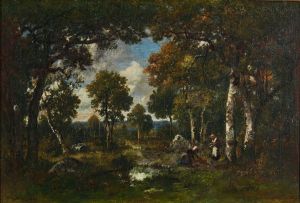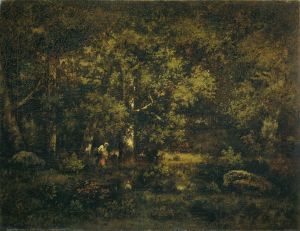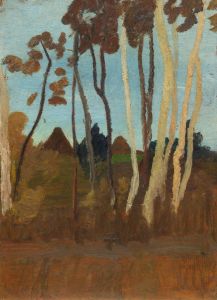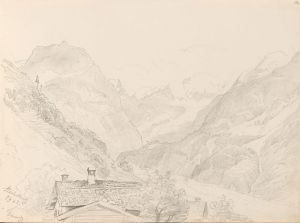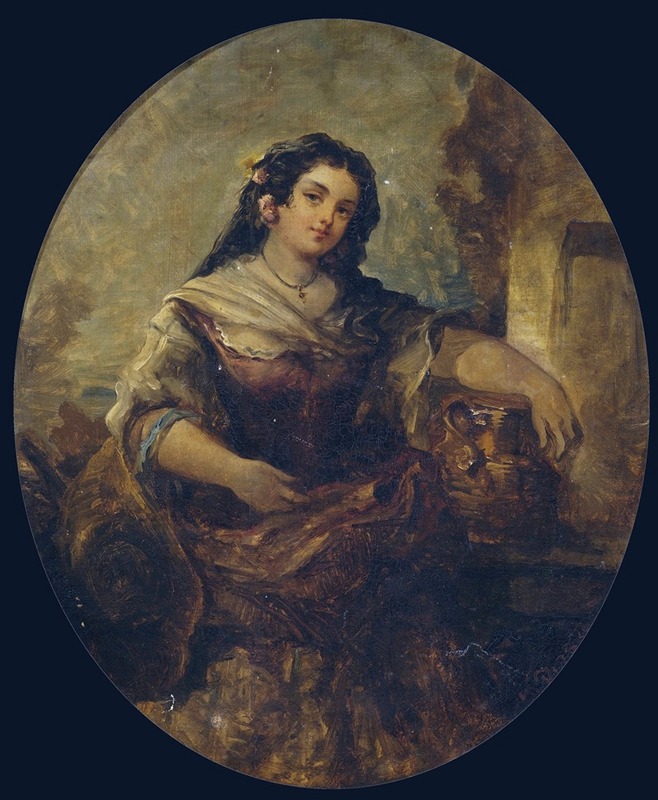
Portrait of a young girl at the well
A hand-painted replica of Narcisse-Virgile Diaz de La Peña’s masterpiece Portrait of a young girl at the well, meticulously crafted by professional artists to capture the true essence of the original. Each piece is created with museum-quality canvas and rare mineral pigments, carefully painted by experienced artists with delicate brushstrokes and rich, layered colors to perfectly recreate the texture of the original artwork. Unlike machine-printed reproductions, this hand-painted version brings the painting to life, infused with the artist’s emotions and skill in every stroke. Whether for personal collection or home decoration, it instantly elevates the artistic atmosphere of any space.
"Portrait of a Young Girl at the Well" is a painting by the French artist Narcisse-Virgile Diaz de la Peña, who was born on August 20, 1807, and died on November 18, 1876. Diaz de la Peña was a prominent figure in the Barbizon School, a movement that emphasized naturalism and was named after the village of Barbizon near the Forest of Fontainebleau, where many of the artists gathered.
The painting depicts a young girl standing by a well, a common rural scene that reflects the artist's interest in capturing the simplicity and beauty of everyday life. Diaz de la Peña was known for his ability to infuse his works with a sense of warmth and intimacy, often focusing on the interaction between light and shadow to create a mood of tranquility and contemplation.
In "Portrait of a Young Girl at the Well," the artist employs a soft, diffused light that bathes the scene in a gentle glow, highlighting the girl's delicate features and the texture of her clothing. The well, a central element in the composition, serves not only as a physical structure but also as a symbol of sustenance and community in rural life. The girl's pose and expression suggest a moment of quiet reflection, adding a layer of emotional depth to the painting.
Diaz de la Peña's technique is characterized by loose, expressive brushstrokes and a rich, earthy palette, which he uses to great effect in this work. The background is rendered with a sense of depth and atmosphere, drawing the viewer's eye into the scene and creating a feeling of immersion in the natural world. This approach is typical of the Barbizon School, which sought to move away from the formalism of academic painting and towards a more direct and personal engagement with nature.
Throughout his career, Diaz de la Peña was influenced by the works of earlier landscape painters such as Théodore Rousseau and Jean-Baptiste-Camille Corot, both of whom were also associated with the Barbizon School. However, Diaz de la Peña's work is distinguished by its unique blend of romanticism and realism, as well as his ability to capture the fleeting effects of light and atmosphere.
"Portrait of a Young Girl at the Well" exemplifies Diaz de la Peña's skill in portraying the quiet beauty of rural life and his sensitivity to the subtleties of human emotion. The painting remains a testament to his talent and his contribution to the development of 19th-century French art.
Today, Diaz de la Peña's works are held in numerous public and private collections around the world, and he is remembered as one of the key figures in the Barbizon School. His paintings continue to be admired for their technical mastery and their evocative portrayal of the natural world.





